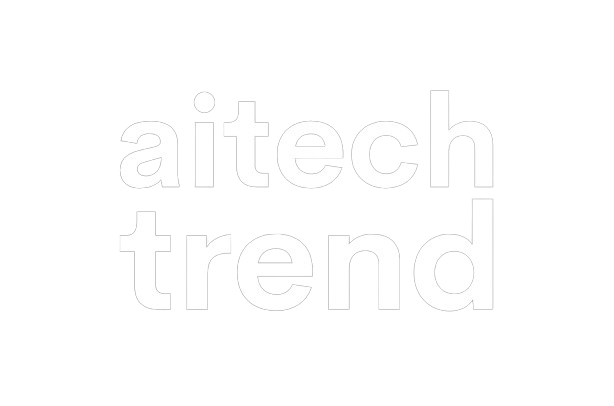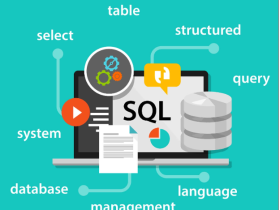Operating systems play a critical role in maintaining the security of digital systems and safeguarding sensitive information. When it comes to cybersecurity, choosing the right operating system can significantly impact an individual or an organization’s ability to protect themselves against various threats and attacks. In this article, we will explore and compare three prominent operating systems – Windows, macOS, and Linux – in terms of their suitability for cybersecurity purposes.
Introduction
Operating systems provide a platform for users to interact with their computers and manage software applications. They control the hardware resources, facilitate communication between software and hardware components, and ensure the overall functionality of the system. When it comes to cybersecurity, the choice of operating system becomes crucial, as different systems have distinct security features, vulnerabilities, and approaches to handling threats.
Understanding the Importance of Operating Systems in Cybersecurity
Before diving into the specific details of Windows, macOS, and Linux, it is essential to understand why operating systems are crucial for cybersecurity. The operating system acts as the first line of defense, implementing security mechanisms such as user authentication, access control, and data encryption. It also manages security updates, patches vulnerabilities, and offers a secure environment for running applications. A robust and secure operating system is a fundamental requirement for maintaining cybersecurity.
Windows: A Comprehensive Analysis
Overview of Windows OS
Windows, developed by Microsoft, is the most widely used operating system globally. Its popularity stems from its user-friendly interface, vast software compatibility, and extensive hardware support. Windows offers various versions, with Windows 10 being the latest iteration. It provides a familiar environment for users and is often the go-to choice for personal and business use.
Security Features and Vulnerabilities
Windows has made significant strides in enhancing its security features over the years. It incorporates features such as Windows Defender Antivirus, Windows Firewall, and Windows Security Center, which provide essential protection against malware, viruses, and other threats. However, Windows has also been a primary target for attackers due to its widespread adoption, making it more vulnerable to security breaches if not properly managed.
Pros and Cons of Windows for Cybersecurity
Windows offers a range of benefits for cybersecurity, including its extensive software support, ease of use, and a broad user base, which results in a vast community for support and knowledge sharing. However, Windows is often criticized for its susceptibility to malware, frequent security updates, and occasional compatibility issues. It requires proactive management and regular patching to ensure a secure environment.
macOS: A Deep Dive
Overview of macOS
macOS, developed by Apple Inc., is the operating system designed exclusively for Apple’s Mac computers. Known for its sleek and intuitive user interface, macOS offers a seamless user experience and is particularly popular among creative professionals and individuals who value aesthetics and simplicity.
Security Features and Vulnerabilities
macOS has long been considered a secure operating system due to its robust architecture and built-in security features. It incorporates technologies like Gatekeeper, XProtect, and FileVault, which provide protection against malware, unauthorized software installations, and data encryption. However, it is not immune to security vulnerabilities and has faced occasional security breaches and exploits.
Pros and Cons of macOS for Cybersecurity
macOS offers several advantages for cybersecurity, including a secure default configuration, strong protection against malware, and a closed ecosystem that limits the installation of unauthorized software. Additionally, Apple’s focus on privacy and regular security updates enhances the overall security posture of macOS. However, macOS has a smaller market share compared to Windows, making it a less attractive target for attackers but also limiting the availability of specific software and tools.
Linux: Exploring the Open-Source Alternative
Overview of Linux
Linux is an open-source operating system that is built collaboratively by a global community of developers. It is known for its flexibility, stability, and customization options. Linux distributions, such as Ubuntu, Fedora, and Debian, cater to various user preferences and requirements.
Security Features and Vulnerabilities
Linux benefits from its open-source nature, as it undergoes constant scrutiny and receives rapid security updates from the community. It has a robust security architecture, with features like user privilege separation, strong file permissions, and a built-in firewall (e.g., iptables). While Linux is generally considered more secure than other operating systems, it is not entirely immune to vulnerabilities, especially if misconfigured or not promptly updated.
Pros and Cons of Linux for Cybersecurity
Linux offers several advantages for cybersecurity, such as its open-source nature, which allows for comprehensive security auditing and customization. It also provides excellent support for security tools and a vast repository of software packages. Linux’s modular design and strong emphasis on stability make it an ideal choice for servers and security-focused environments. However, Linux may have a steeper learning curve for beginners, and certain software compatibility issues may arise due to the vast number of distributions available.
Comparison of Windows, macOS, and Linux for Cybersecurity
Now that we have explored the individual characteristics of Windows, macOS, and Linux, let’s compare them based on several factors relevant to cybersecurity:
Security Architecture and Approach
Windows employs a combination of built-in security features, third-party software, and regular updates to mitigate security risks. macOS follows a similar approach, focusing on a secure default configuration and a closed ecosystem. Linux, being open-source, benefits from community-driven security enhancements and emphasizes customization and control over security settings.
Prevalence of Threats and Attacks
Windows has historically been the primary target for attackers due to its widespread usage. macOS has seen a rise in targeted attacks in recent years, primarily due to its growing popularity. Linux, while not immune to attacks, has a relatively lower number of reported vulnerabilities and is less targeted.
User-Friendliness and Customizability
Windows prioritizes user-friendliness and ease of use, making it accessible to a wide range of users. macOS focuses on delivering a seamless and intuitive user experience, particularly for Mac users. Linux offers extensive customization options and is highly flexible but may require more technical expertise to set up and manage effectively.
Availability of Security Tools and Updates
Windows benefits from a vast ecosystem of security tools and software, both proprietary and open-source.
Comparison of Windows, macOS, and Linux for Cybersecurity
Now that we have explored the individual characteristics of Windows, macOS, and Linux, let’s compare them based on several factors relevant to cybersecurity:
Security Architecture and Approach
Windows employs a combination of built-in security features, third-party software, and regular updates to mitigate security risks. macOS follows a similar approach, focusing on a secure default configuration and a closed ecosystem. Linux, being open-source, benefits from community-driven security enhancements and emphasizes customization and control over security settings.
Prevalence of Threats and Attacks
Windows has historically been the primary target for attackers due to its widespread usage. macOS has seen a rise in targeted attacks in recent years, primarily due to its growing popularity. Linux, while not immune to attacks, has a relatively lower number of reported vulnerabilities and is less targeted.
User-Friendliness and Customizability
Windows prioritizes user-friendliness and ease of use, making it accessible to a wide range of users. macOS focuses on delivering a seamless and intuitive user experience, particularly for Mac users. Linux offers extensive customization options and is highly flexible but may require more technical expertise to set up and manage effectively.
Availability of Security Tools and Updates
Windows benefits from a vast ecosystem of security tools and software, both proprietary and open-source. It has a robust antivirus market and various security suites tailored to different user needs. macOS has a smaller selection of security tools but benefits from Apple’s focus on providing regular security updates. Linux offers a rich repository of open-source security tools and software, with the ability to leverage community-driven solutions.
Conclusion
In conclusion, the choice of operating system for cybersecurity depends on various factors, including user preferences, system requirements, and the specific use case. Windows, with its widespread adoption, extensive software support, and continuous security updates, remains a popular choice. macOS, known for its sleek interface, strong default security features, and focus on privacy, appeals to users seeking an intuitive and secure experience. Linux, with its open-source nature, customization options, and robust security architecture, is favored in security-focused environments.
Ultimately, a proactive approach to cybersecurity is crucial regardless of the operating system chosen. Regular updates, strong passwords, cautious browsing habits, and a layered security approach involving firewalls, antivirus software, and user education are essential in protecting against evolving threats.












Leave a Reply